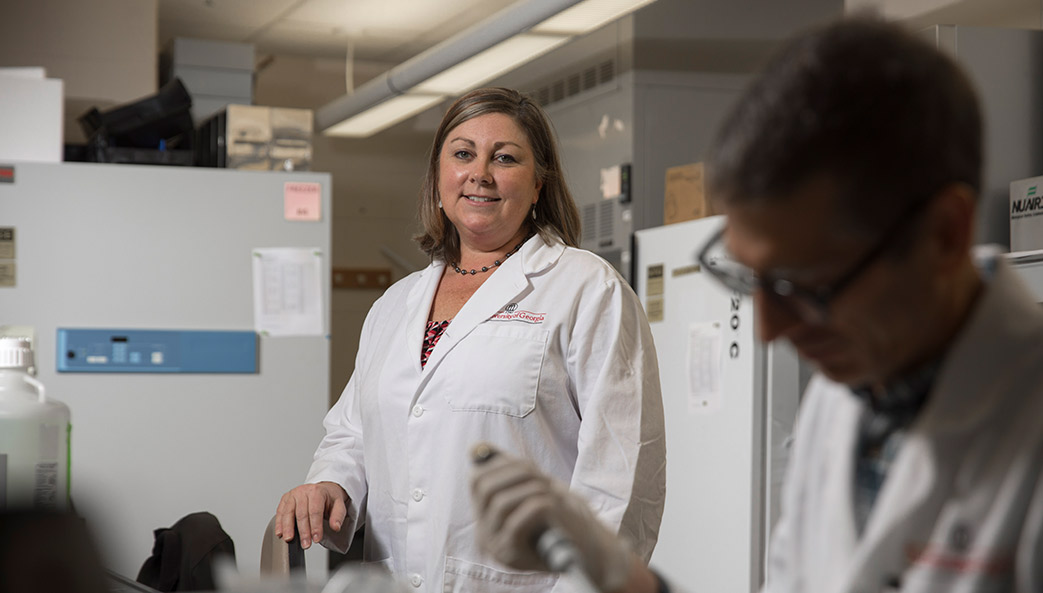University of Georgia professor Tim Brenneman now has a newly discovered truffle species named after him: Tuber brennemanii.
Brenneman, an expert in pecan diseases, collaborated with plant pathologist Matthew Smith at the University of Florida to help discover the species.
Smith’s doctoral student, Arthur Grupe, published the research in Mycologia, a peer-reviewed scientific journal, and honored Brenneman with the truffle designation. The paper describes two new species of truffles discovered on the roots of pecan trees. One was named in honor of Brenneman and the other species was named Tuber floridanum, a truffle species seen more commonly in Florida.
“Since we had worked together so much on this, they decided to name the other species after me,” he said. “I was very surprised and pleased. I didn’t know they were going to do that.”Truffles are mycorrhizal, which means that the fungi have a symbiotic relationship with plants, including pecan trees. Both species were discovered using molecular tools to extract DNA from the roots of pecan trees. The plant pathologists then compared the results to other known truffle species.
“Many of the results matched up with Tuber lyonii, the main species of pecan truffle we have found for years in pecan orchards. However, the DNA samples clearly showed there were two more species other than the one we were harvesting,” Brenneman said. “For a while we just didn’t know what they looked like because we had not found the fruiting bodies.”
Through this discovery, there are now at least three known truffle species found in Georgia, all of which grow in pecan orchards.
Truffles are beneficial fungi found on tree roots that help the host tree absorb minerals and water. They function as an extended root system for the tree. The fruiting bodies form in midsummer to fall and are edible.
Pecan truffles were originally discovered in Texas in the 1950s, but Brenneman found them in Georgia in the late 1980s. Ever since, Brenneman has been searching for ways to consistently produce them.
Brenneman and his colleagues are trying to figure out the best way to increase the fruiting of pecan truffles, primarily by inoculating the fungus on young trees before they are transplanted into new orchards. If these efforts are successful, future pecan orchards may simultaneously produce two highly valuable crops, pecans and truffles.
“Just like you have to learn how to grow peanuts and cotton, (you must do the same) in growing a truffle,” he said.
Truffles are a delicacy and are extremely valuable because of their high demand in the gourmet food industry. The most valuable truffles are the species native to Europe, but pecan truffles have found a place in restaurants where they are added to pasta, lobster or even grits.
“One thing that has slowed the wider acceptance of pecan truffles is the limited supply. They can be difficult to harvest since they grow underground, and it is really helpful to have a truffle dog,” said Brenneman of animals trained to find truffles.
For more information about pecans and truffles, visit pecans.uga.edu/.






